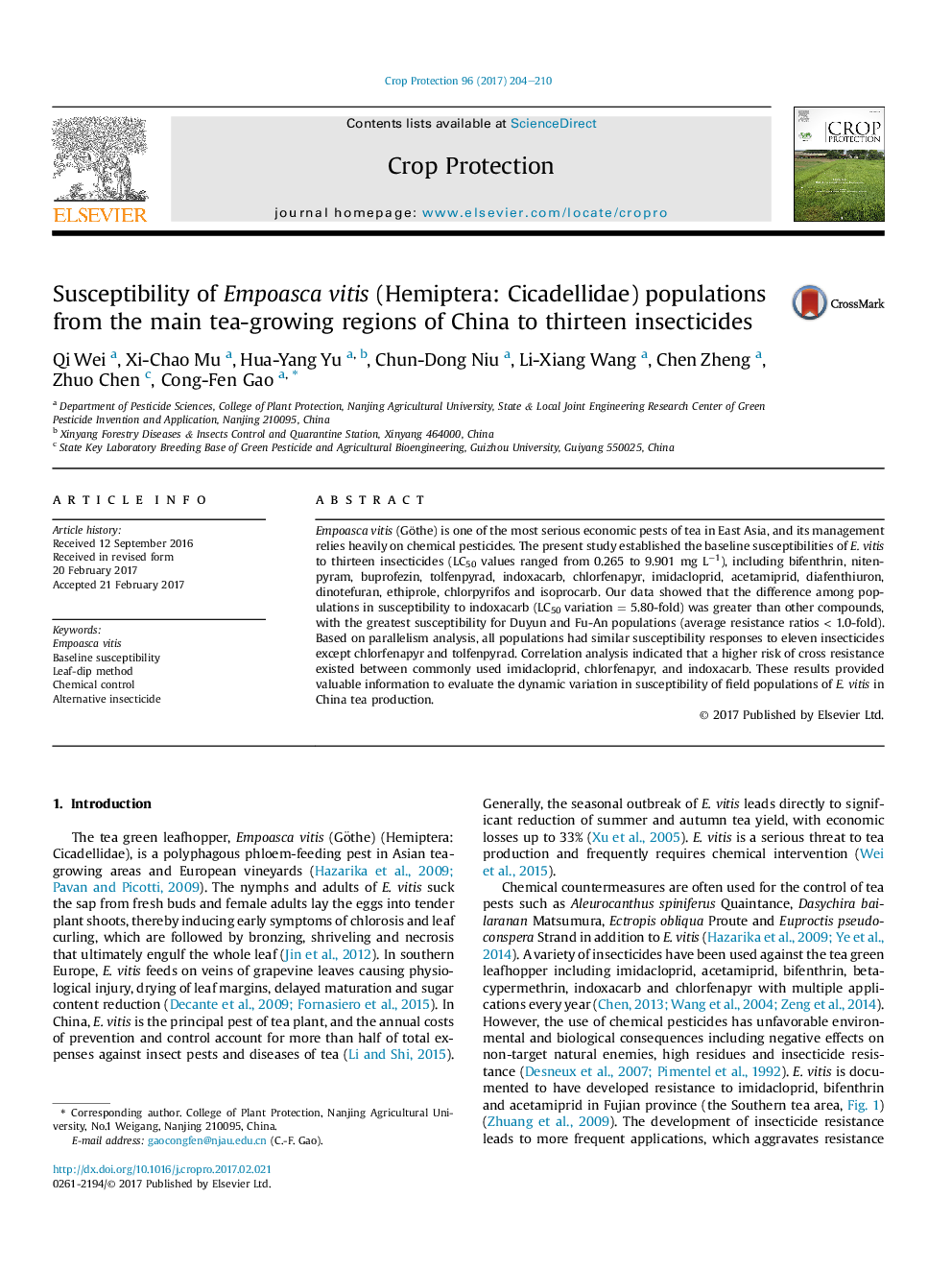| Article ID | Journal | Published Year | Pages | File Type |
|---|---|---|---|---|
| 5760970 | Crop Protection | 2017 | 7 Pages |
Abstract
Empoasca vitis (GÓ§the) is one of the most serious economic pests of tea in East Asia, and its management relies heavily on chemical pesticides. The present study established the baseline susceptibilities of E. vitis to thirteen insecticides (LC50 values ranged from 0.265 to 9.901 mg Lâ1), including bifenthrin, nitenpyram, buprofezin, tolfenpyrad, indoxacarb, chlorfenapyr, imidacloprid, acetamiprid, diafenthiuron, dinotefuran, ethiprole, chlorpyrifos and isoprocarb. Our data showed that the difference among populations in susceptibility to indoxacarb (LC50 variation = 5.80-fold) was greater than other compounds, with the greatest susceptibility for Duyun and Fu-An populations (average resistance ratios < 1.0-fold). Based on parallelism analysis, all populations had similar susceptibility responses to eleven insecticides except chlorfenapyr and tolfenpyrad. Correlation analysis indicated that a higher risk of cross resistance existed between commonly used imidacloprid, chlorfenapyr, and indoxacarb. These results provided valuable information to evaluate the dynamic variation in susceptibility of field populations of E. vitis in China tea production.
Related Topics
Life Sciences
Agricultural and Biological Sciences
Agronomy and Crop Science
Authors
Qi Wei, Xi-Chao Mu, Hua-Yang Yu, Chun-Dong Niu, Li-Xiang Wang, Chen Zheng, Zhuo Chen, Cong-Fen Gao,
